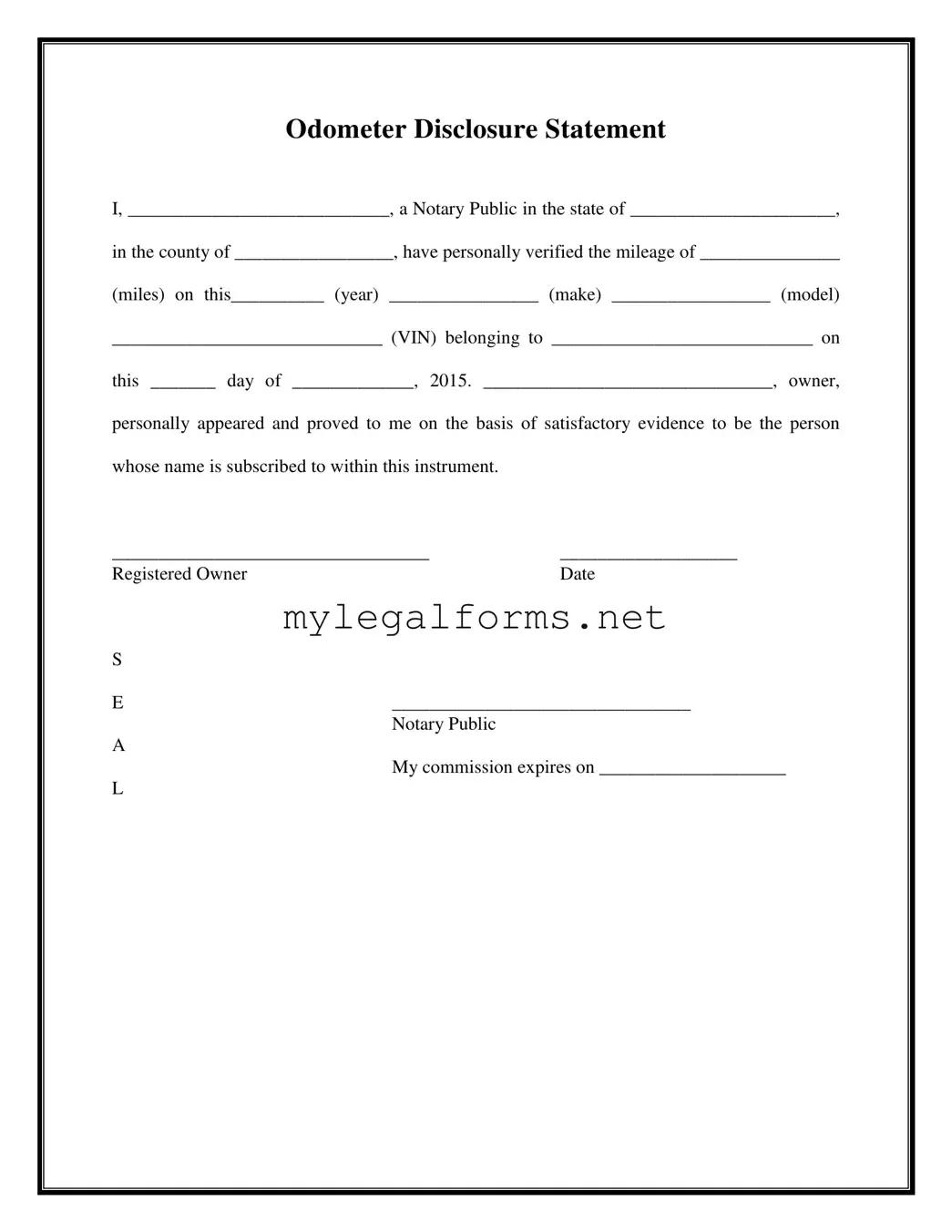Notarized Odometer Statement Template
The Notarized Odometer Statement is a legal document used to verify the mileage of a vehicle at the time of sale. This form includes essential details such as the vehicle's make, model, and VIN, along with the owner's information. It serves to protect both buyers and sellers by ensuring accurate disclosure of the vehicle's mileage.
Launch Notarized Odometer Statement Editor

